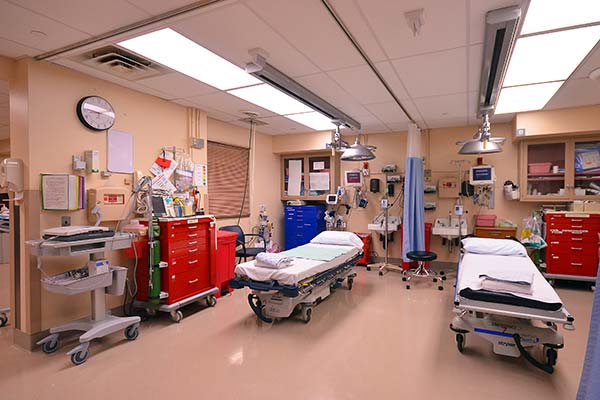The Navigation of Healthcare Facility Code Regulations
You can comply without being an expert

Healthcare Design and Construction is highly regulated - and for good reason. In addition to meeting the most basic levels of occupancy safety required of every structure as defined by NFPA 101 and the International Code Council, healthcare facilities must go beyond these measures to guarantee safety. Critical healthcare facilities need to ensure the safety of individuals who may be unable to move on their own, have compromised immune systems or are undergoing surgery. For example, incorrectly calculated air changes or electrical shorts in these buildings could, quite literally, mean life or death.
However, the many standards and layers of ordinances pose a distinct challenge—and one that is further complicated when regulations are contradictory. To ensure compliance with all authorities having jurisdiction, it is important to first understand the layers of codes and how they intersect.
National Requirements
On a national basis, healthcare facilities must meet the code requirements pertaining to the requirements set by the Centers for Medicare & Medicaid Services (CMS).
CMS currently incorporates the 2012 editions of NFPA (National Fire Protection Association)101, the Life Safety Code, and NFPA 99, the Health Care Facilities Code, as well as referencing sections of NFPA standards 70, 72, 80, 90a and 106. However, because nothing is simple in healthcare building (or facility) compliance, there are exceptions. For instance, CMS fire safety requirements include several exceptions to NFPA requirements.
Compliance with CMS is typically the foremost consideration for healthcare facilities—particularly since the organization ties Medicare and Medicaid reimbursements to healthcare systems’ ability to comply with its guidelines.
Healthcare facilities found to be in deficiency of a CMS requirement during a survey face the potential of being penalized. These surveys are usually conducted by either a State Agency authorized by CMS, or from a CMS-approved accreditation organization, such as The Joint Commission.
Of course, surveyors also have their own standards. Compliance with the CMS-approved surveyors’ standards will ensure compliance to CMS requirements and, in some cases, may exceed it.
State and Local Requirements
National requirements may loom largest, but healthcare facilities must also meet specific regional and state requirements, typically the International Code Council (IBC) standards. In addition to conducting CMS surveys, some state health departments may have their own unique licensure requirements. Local fire ordinances may also have specific regulations for design conditions. With the addition of facility rules set by various insurance carriers, the layers become even more complex.
While the state agency is the authority with jurisdiction, healthcare facilities also need a local occupancy inspection. The challenge occurs when state authorities review design plans according to NFPA requirements, while local agencies want to see IBC compliance before providing a permit. As a result, it’s entirely possible to gain approval from one organization, while being fined for noncompliance by another.

Failure to comply with either state or local regulations can lead to penalties, including delays to the certificate of occupancy or penalties from the state Department of Environmental Protection, such as fines for stack emissions and water consumption.
Voluntary Guidelines
Voluntary guidelines help organizations set goals for exceeding basic requirements and establishing a competitive edge. More healthcare construction projects are being designed to meet voluntary guidelines, such as the U.S. Green Building Council’s LEED Certification. However, many healthcare organizations also adopt rigorous departmental requirements to ensure compliance with the latest standards for medical quality. These stringent guidelines might include ANSI (American National Standards Institute) standards for pharmacies, sterile processing, scope cleaning and other hospital department standards.
Meeting the Layers of Compliance
Ensuring compliance with each of these regulatory bodies can present numerous challenges for healthcare facility owners and managers. Yet, through a balance of risk management solutions, strong judgment and knowledgeable partners, it is possible for every healthcare organization to find the best value solution for complying with all applicable codes—even when the codes seem to contradict one another.
Please view and download JPT's Executive Guide here to read more content pertaining to the complexity of healthcare facility compliance.